
Hello everyone:
As promised, here is another set of stories to round out a life lucky enough to have some birds in it.
As always, please remember to scroll past the end of the essay to read some curated Anthropocene news.
Now on to this week’s writing:
Sometimes a glimpse is all it takes.
Dec. 15, 2001: As I cleared snow from our little glacier runway on a windy, overcast, post-blizzard day, I glanced up just as two snow petrels passed in front of me. Few things could be more surprising in the Antarctic hinterlands than the pulsing of wings. The land is essentially lifeless.
I was 120 miles away from McMurdo Station, Antarctica, and 40 miles from the coast, camping out at 5000 feet in the Transantarctic Mountains with my friend Julian for the summer. Our job was to build and maintain a runway on the Odell Glacier. Nobody used it, so our days were mostly spent exploring the high-elevation ice and stone that surrounded us, like two cheerful stowaways abandoned on Mars.
But we were busy now. An enormous storm had reached up from the coast to smother even our high elevation site. McMurdo had drifts several feet deep on its streets and airfield. It would take them a week to clear it all out. Meanwhile, snow had covered half the runway, and buried our camp.
And so I was in the cab of our little orange Kubota tractor, using the snow blower to chew up the hard snow and send it hurling downglacier on the heels of blustery 30-knot wind. Then suddenly, through this white turbulence under a grey sky, beating upwind into the teeth of the wind, came the two snow petrels. I thought at first they were two chunks of snow uplifted by the machine and somehow hurled upwind, but no, they had wings, and were moving slowly up toward the ice cap instead of whipping end-for-end down toward the sea.
Snow petrels are among the most beautiful of birds. Like a small, elegant antipode to the polar bear, they seem a perfect Antarctic totem. Pure white and graceful, snow petrels flutter over open water and the vast south polar pack ice for their krill and fish. They often nest in the rocky outcrops and nunataks of Antarctica, sometimes more than 100 miles from the sea. Inland Antarctica, where conditions are lunar and no terrestrial life greater than lichen exists, is a hell of a place to nest.
I’m not the first to marvel at them. Here is Douglas Mawson, in Home Of The Blizzard, his astonishing account of a 1912 expedition:
It was a most remarkable thing to witness a snow-petrel, small, light and fragile, making headway over the sea in the face of a seventy mile hurricane, fluttering down through the spindrift…
In the few seconds it took me to take the tractor out of gear, drop the bucket, and jump out onto the ice, they were gone. It was hard to focus in flat light on snowy terrain under milky clouds, and it was harder still in such a light to find two creatures so camouflaged as to seem inanimate. The petrels might have continued upwind, flapping invisibly, or they may have veered well out of range. I actually looked down to see if they might be resting at my feet.
The brief experience was almost visionary, or at least unnerving. Did I really see two small pearl-white birds with oil-black beaks? Did I invent them to keep me company? If not, it was worth considering that they may have sought me out instead. Julian and I were the only life for many, many miles, and the petrels chose to do a close fly-by of me and the alien Kubota.
This anomaly of life, of snow-white life, has often been described in mythic terms by those travelling into the heart of the Antarctic. The only other time I’ve seen them they were wheeling under Antarctic sunlight among icebergs. They flashed like distant windows, like diamond dust, before disappearing like creatures at the margin between crystal and cell.
Birds giveth, and birds taketh away.
January 20th, 2002: A hat stolen by a skua was returned to me by helicopter. As I sat in a tent shaken by katabatic winds descending the Odell from the East Antarctic ice cap, I opened a package delivered on a resupply flight. Stunned, I found myself holding the beautiful wool hat that had been swiped off my head two years earlier.
I’d been walking back to work in McMurdo after a quick lunch, leaning with each step into a stiff 25-knot breeze. I heard a flapping close behind me, and quickly turned to see a skua veer off. He fluttered down to stand on the gravel road a few feet downwind. He stared at me, I looked at him, and that seemed to settle it. Thinking him merely curious, I walked on. A hundred feet farther up, however, my snug hat somehow blew off. I turned and stooped to pick it up, but the hat was above me rather than below, and the skua was beating his heavy wings to gain a little more altitude before heading back toward the center of town.
The skua had surfed the headwind so perfectly that his talons did not touch me, nor was the hat pulled off with any force. It was like being pickpocketed, except that he nicely took the pocket and left the contents.
South polar skuas are “kleptoparasites,” the brutes and thieves of the Antarctic coast, eating fish, penguin chicks, seal placenta, and American trash. I think of them as a hybrid of gull and pterodactyl. In McMurdo, it’s common to see them puff up and angrily hold their ground between a dumpster they’ve claimed and a ten-ton Caterpillar forklift coming to pick it up.
Still, it’s a miracle they survive down here. Their fierceness is a beautiful necessity. They are tuned to any food source, and intelligent enough to explore the unfamiliar. My hat’s tassel must have swung around in the breeze like an intestine ripe for the plucking. Skuas are notorious in McMurdo for stealing food from hands and even a bagel from someone’s mouth, but never a hat.
I refused to give up without a fight. The hat had been knit by my friend Deb, and I wore it every day. But the thief picked up speed, pushed hard by the gusts. I picked up speed, and then rocks, which I rifled in vain toward the skua while laughing in disbelief. Two hundred meters downwind, well ahead of me, he landed. Confident that he wouldn’t take off again with the unwieldy hat, I shotgunned some gravel at him – hypothetically violating the Antarctic Conservation Act and risking a $10,000 fine – as I sprinted the last few meters. (I promise: no birds were harmed in the making of this story.)
Yet off he went, talons clenched. In a matter of seconds, moving downwind and downhill over cargo lines, he was a quarter of a mile away and weaving between buildings like a fighter plane under radar. I had to turn back so I wouldn’t be late for work, but mourned the loss for two years.
The day before my miracle, a hat was found emerging from mud and melting snow in a no-man’s land above the helipad. A helitech, shortcutting up to Deb’s workplace, found it and gave it to one of her coworkers, both agreeing that it must have been recently lost. The hat was stuck in a box with his personal gear for the time being, with just a corner showing. The next morning, Deb walked by and, as an inveterate knitter, grabbed the hat to inspect its construction.
Over the next minute, in a clicking of unconscious gears, she studied it, admired it, realized she had done similar things, then thought it looked familiar, and then suddenly ran upstairs and burst into a staff meeting yelling “This is Jason’s hat! This is Jason’s hat!”
Not surprisingly, it took a moment for anyone to care. Then Melissa, her boss and my penguin-loving friend since 1994, got it. She told Deb there was a helicopter heading my way in an hour. Deb would write the letter, and Melissa would wash the hat.
Wonders with and without wings.
New Zealand/Aotearoa is a paradise for birds and birders. Like all paradises these days, it is both deeply wounded and under careful repair, but even in its wounded state New Zealand offers an astonishing journey into a world of birds.
A thousand years ago, it was literally a world of birds. Before Maori settlement the islands were inhabited almost exclusively by birds and invertebrates. There were a few reptiles, but the only mammals were bats. No canines, felines, ungulates, primates, etc. Just birds and the forest primeval. As a result, dozens of bird species became flightless, creating ecological niches in the absence of, or in place of, mammals.
In the centuries since, many flightless species have been lost or severely diminished, notably the 11 species of moa that were very large and apparently quite tasty (to the Maori), all now extinct. Since European settlement, the usual large-scale blunt weapons of modern society (agriculture, population growth, development, invasive species) have pushed a long list of NZ bird species to the edge, but the avian wonders that remain are still extraordinary: kiwi, kakapo, weka, takahe, kea, morepork, tui, to name a few. I was fortunate enough to visit New Zealand yearly for most of a decade – another benefit of my Antarctic work – usually for a couple months per year, and spent much of my time there in the backcountry, in the company of an incredibly beautiful array of life.
I don’t have a NZ bird story for you, or rather, I have far too many to tell: Looking down at the sweet little South Island robin/kakaruwai perched on the toe of my boot, looking up at me; stealthily seeking the elusive Southern brown kiwi/tokoeka, only to turn and find a one racing up the trail behind us to say hello; watching a gang of clever keas (alpine parrots) in a high mountain campsite puzzling out how to turn on a water faucet; waking in a fern-filled forest to the otherworldly sound of bellbirds/korimako and tuis ringing in the day.
Instead, the image I want to leave you with is the one I started with. Imagine a world shaped and populated primarily by birds. Imagine the South Island giant moa, 11 feet tall and weighing 500 pounds. Imagine the massive moa-hunting Haast's eagle. But mostly I want you to imagine the intricate and elegant music of a lush paradise so full of birds that it didn’t even require wings.
Paying attention to your neighbors
At this point you might be surprised to hear that I don’t consider myself a birder, really. I don’t keep a life list or travel to see birds. The farthest Heather and I have traveled to see a rare bird is a few miles down the road here (northern hawk owl, Steller’s sea eagle). For many years now, we’ve taken nature notes on what we see and who we encounter around our home. Heather and I just try to pay attention to our neighbors, to learn about them and from them. It’s really not much more than that.
We’re in a new house now, and we’re building new relationships. Several miles down the road is the place we lived for 16 years, a lovely small house on the margin between good Maine woods and a large beautiful field. We have endless anecdotes and observations from those years of paying attention, from moose to monarchs, trout lilies to tree frogs, Halloween pennants to beaked hazelnut. But birds are the threads that weave it all together. There is, as many observers have noted over the centuries, a magic in birds that is both aspirational and inspirational.
At that lovely cottage we watched a young barred owl in an apple tree helplessly falling asleep in the late afternoon sunlight, her head bobbing, minutes after swallowing a vole. We held in our hands a tragic but beautiful array of window-stunned or -killed birds: veery, hairy woodpecker, black-and-white warbler, black-capped chickadees, tufted titmice, sharp-shinned hawk, and more. We were startled and amused by the early arrival of the year’s first ruby-throated hummingbird, hovering at the picture window, looking inside at us and asking in an annoyed buzz to put out the damn sugar-water feeder. As I’ve written about before, we built and tended a colony of nest boxes for tree swallows and bluebirds.
We sometimes hand-fed chickadees – rarely a titmouse or nuthatch – and felt their small feet gripping a finger or thumb while they selected a seed from our palm. Sometimes we put seeds on top of our winter hats just to feel the marvelous chickadees hopping around up there. Sometimes they landed on shoulders or clung briefly to the front of a wool sweater, looking up at our faces. Once Heather had a flock of redpolls perched all over her as she stood gently smiling amidst their company. And once, half a mile from the house in the middle of a frozen marsh, we heard a couple chickadees approaching us, hopping downward from branch to branch. We looked at each other, found a few sunflower seeds in our pockets, and then stood in wonder as the relationship became a bit deeper.
And one spring evening we snuck up on a male woodcock as he danced at the northern edge of the field. If you haven’t seen or heard the woodcock dance, you should. It’s one of the great wonders of spring in this part of the world. The males pick a conspicuous spot in the open, making a repetitive noise most observers describe as a nasally “peent,” though Heather and I have always thought it sounds more like “meep.” Then, the dance becomes a sky dance. As Aldo Leopold described it,
Suddenly the peenting ceases and the bird flutters skyward in a series of wide spirals, emitting a musical twitter. Up and up he goes, the spirals steeper and smaller, the twittering louder and louder, until the performer is only a speck in the sky. Then, without warning, he tumbles like a crippled plane, giving voice in a soft liquid warble that a March bluebird might envy. At a few feet from the ground he levels off and returns to his peenting ground, usually to the exact spot where the performance began, and there resumes his peenting.
As our woodcock rose every few minutes to dance in the darkening sky, we crept along the edge of the field, hunkering down in the bushes as he plummeted downward. It was the best game of Red Light Green Light I’ve ever played, and before long we were within 15 feet of him. We could even hear him inhale before each meep.
But of all the bird stories I have told here, or could tell, there’s one that felt especially mysterious. Late one February afternoon, as the setting sun lit only the tops of the oaks in the far northwestern corner of the field, we could see through binoculars that a large mixed flock of robins and cedar waxwings was perched in the uppermost twigs, soaking up the last minutes of warmth before the chill of night set in. The robins’ red breasts glowed as they faced the sun. Heather and I were in shadow already, greeting the evening and watching the light fade on the field while standing under the massive red oak that shepherded our small house.
We were looking west, across the field, when we noticed that two birds from the mixed flock had left the others in the treetops and were flying side by side across the field directly toward us.
The pair, one robin and one waxwing, arrived together and perched on the lowest branch of the oak, peering down at us. We said Hello to them, but scarcely knew what to think. More than the snow petrels flying by, more than the South Island robin standing on my boot, more than the hummingbird at the window or the redpolls on Heather’s hat or even the chickadees in the marsh, this was a visitation. This was a deliberate effort to seek us out and look us over – it felt like a diplomatic mission – by one of each of the two species gathered together 600 feet away in the distant treetops.
They had no discernible reason for the effort. Waxwings are intensely social, and robins are social enough in the winter to flock with the waxwings in their joint pursuit of fruit, but I think it’s safe to say neither species normally leaves the last warm perch of the day to visit with people. And for a robin and waxwing to make the visit together? I felt like my 11-year-old self again, at peace in the brush pile, looking up in wonder, absorbing the gift of their presence, and feeling a gratitude that has only deepened with the decades.
Thanks for sticking with me.
In other Anthropocene news:
From the Guardian, some deeply disturbing news about our rapid disruption of an ocean current that’s essential for regulating Earth’s climate and oceanic nutrient flow. The accelerated melting of Antarctic ice is changing the density of water around the southern continent. This is slowing down the creation of Antarctic Bottom Water, which flows northward into the world’s oceans and lifts nutrients from the ocean floor to feed the entire food chain. Bill McKibben also has a good but somber write-up on the seriousness of this problem.
From Yale e360, cobalt mining in the Democratic Republic of the Congo is enslaving, poisoning, and killing hundreds of thousands of people, including tens of thousands of kids. An interview with Siddarth Kara, author of Cobalt Red, who offers a deeply disturbing depiction of the source for the cobalt in our “environmentally-friendly” tech. Maybe you know the basics of this story already, but read the interview for a clearer picture. For one thing, you’ll never feel the same way about the word “artisanal” again.
Also from Yale e360, the remarkable environmental foresight and legacy of President Jimmy Carter, who is currently in hospice care. “History,” his biographer says, “will judge Carter as a president ahead of his time.”
From Inside Climate News, how vested interests watered down the summary for policy-makers (the short version most people read) of the IPCC synthesis report, specifically on the importance of reducing meat consumption and fossil fuel use. “In many cases, the reports said, delegates from fossil fuel and meat producing countries successfully made changes to the policymaker summary that directly contradict scientific evidence.”
From Anthropocene, an excellent overview of the problems and solutions for methane emissions. Though released in far smaller doses than CO2, methane is responsible for a third of warming in the industrial era. A full-court global press right now on methane leaks, seeps, and other emissions would have both an immediate and long-term impact.
From Grist, an Apache sacred site is one court ruling away from being wiped off the map by a giant mining company in its quest for copper.
From Canary Media, some good news about how volunteer “heat pump coaches” in Massachusetts are helping neighbors accelerate the transition from fossil fueled heating and cooling.
From the Revelator, a call from experts around the world to protect freshwater biodiversity.

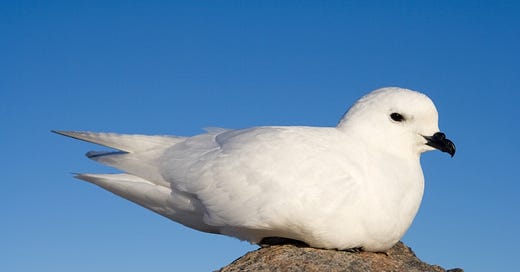



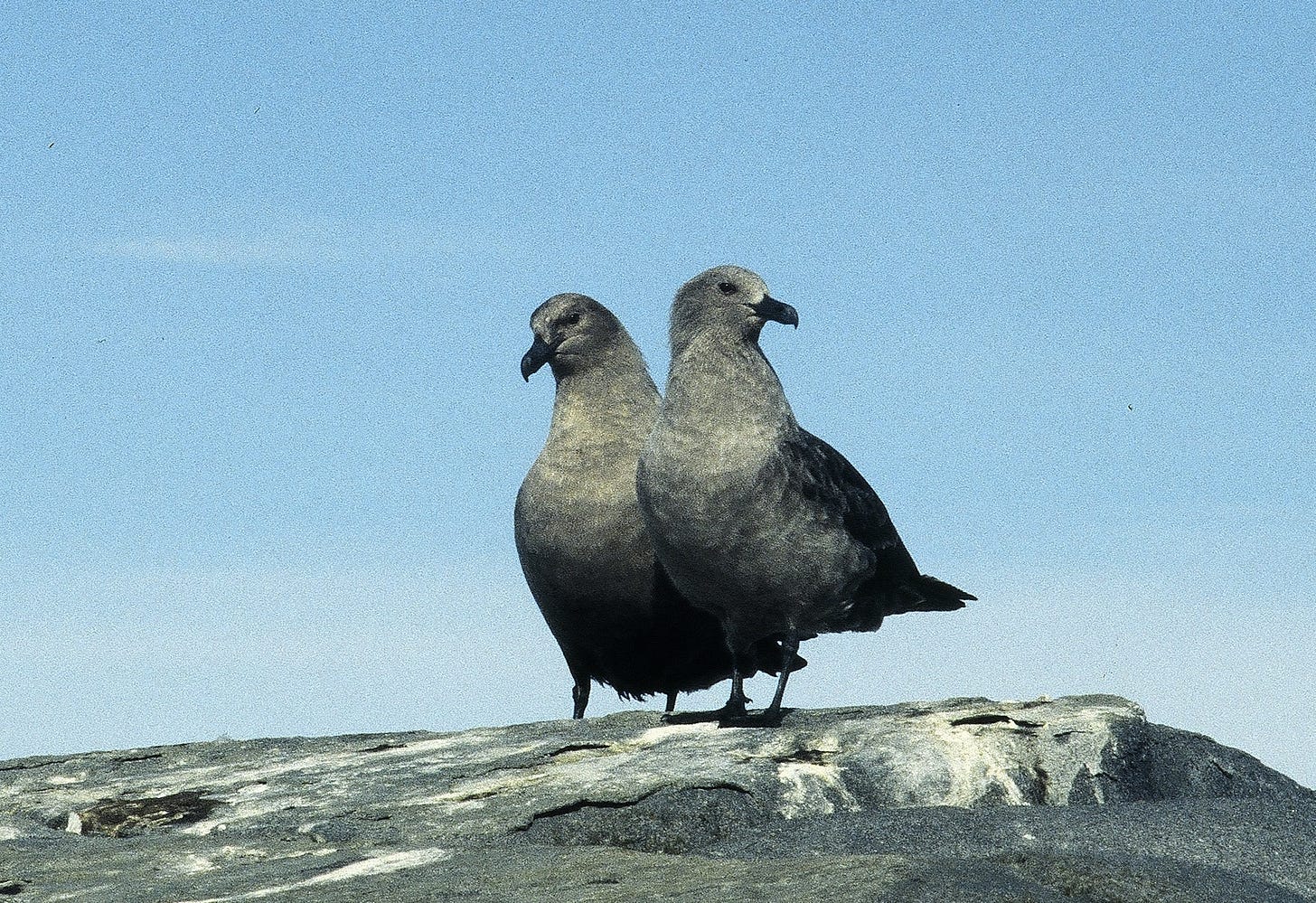
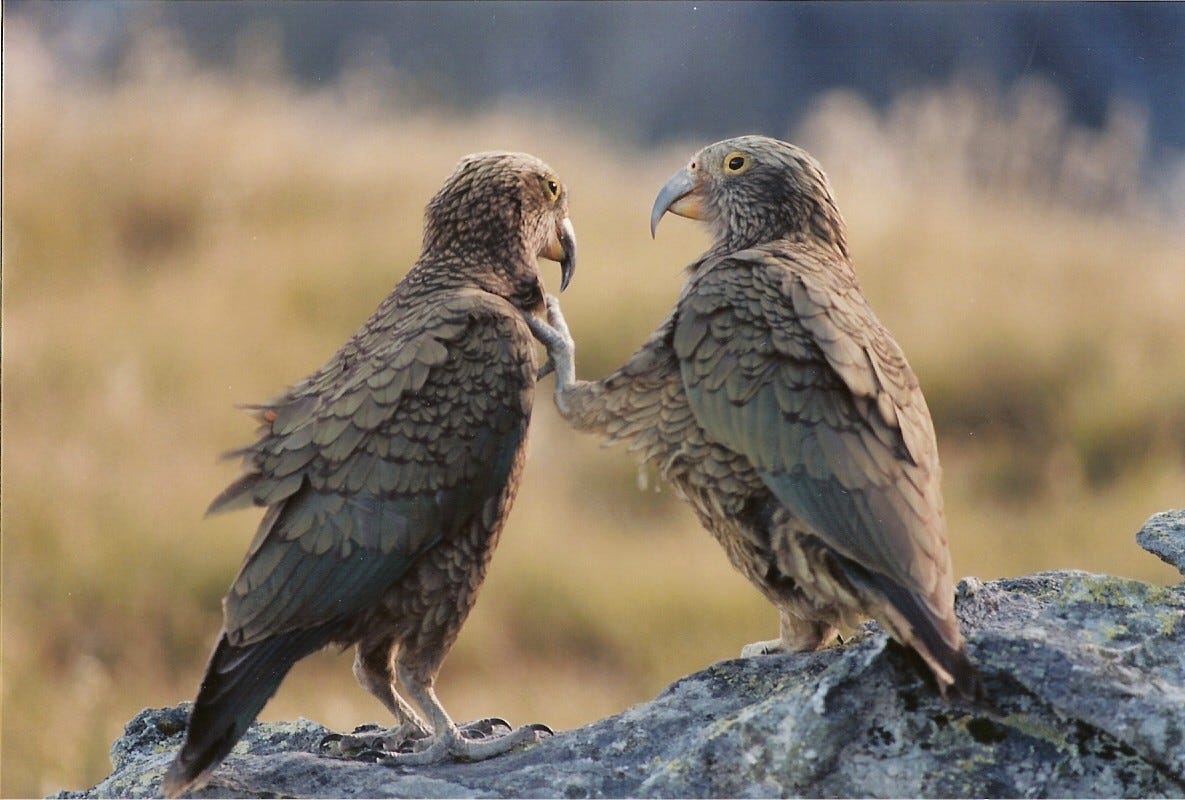
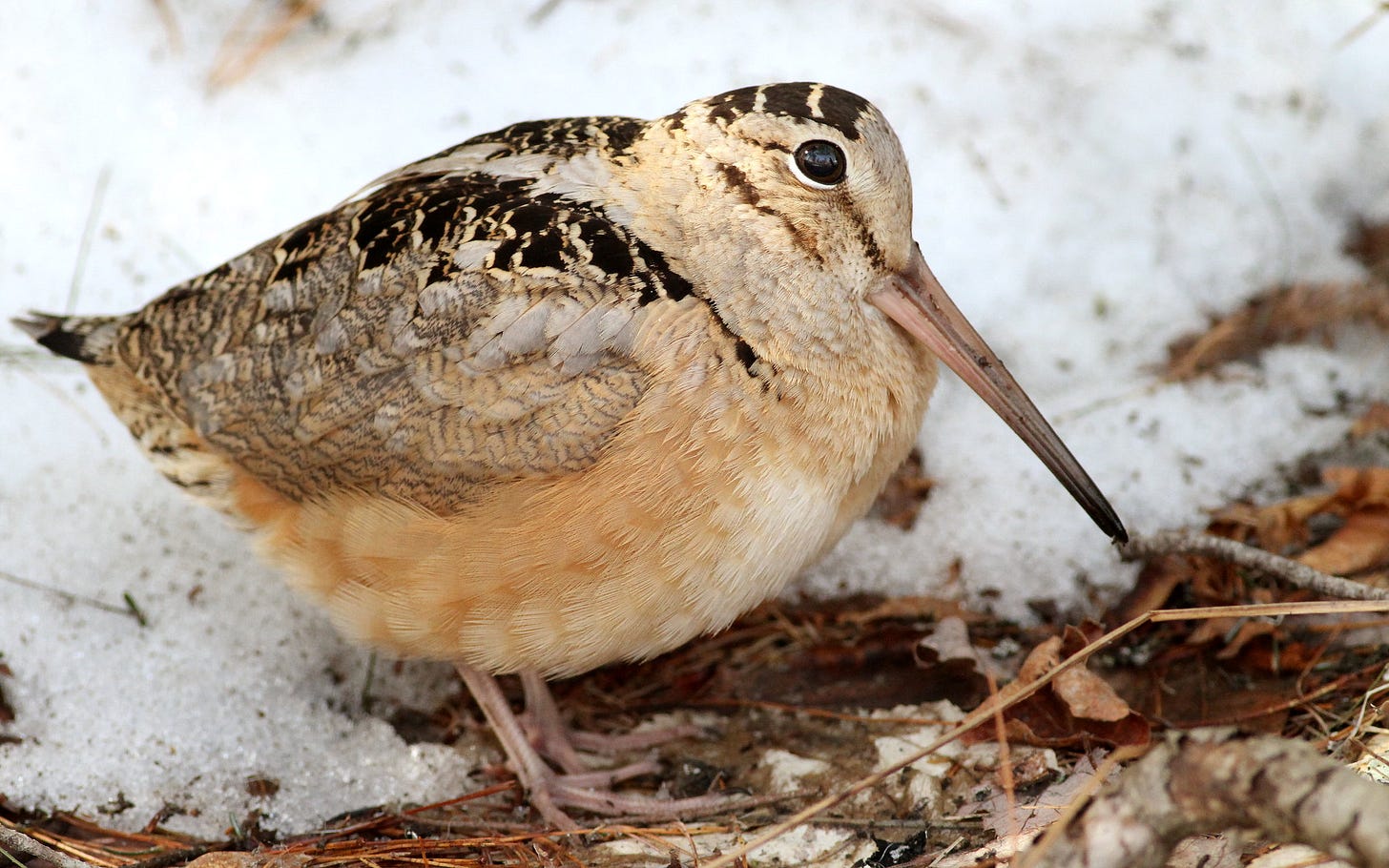
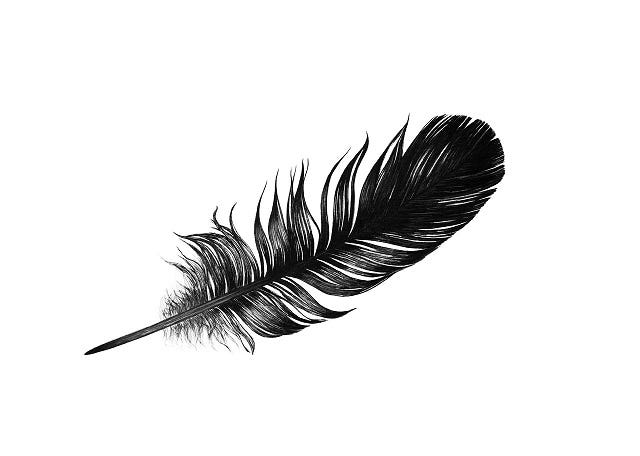
Jason, a perfect read this morning. As I was drinking my coffee I greedily absorbed each word. What wonder. Loved each poetic sentence.. do you still have the hat?☺️
Completely magical: your writing and experiences, the birds themselves. That visit from the robin and the waxwing! You are an exceptional spirit and it shows so clearly why you would get such visitations.
The world has such profound beauty and the creatures in it, crows, petrels, keas have such a mysterious depth and intelligence. It is wondrous and humbling. I don't mind if the Sixth Extinction collects us to its embrace, but please leave the birds.